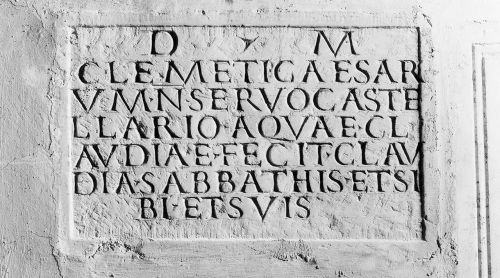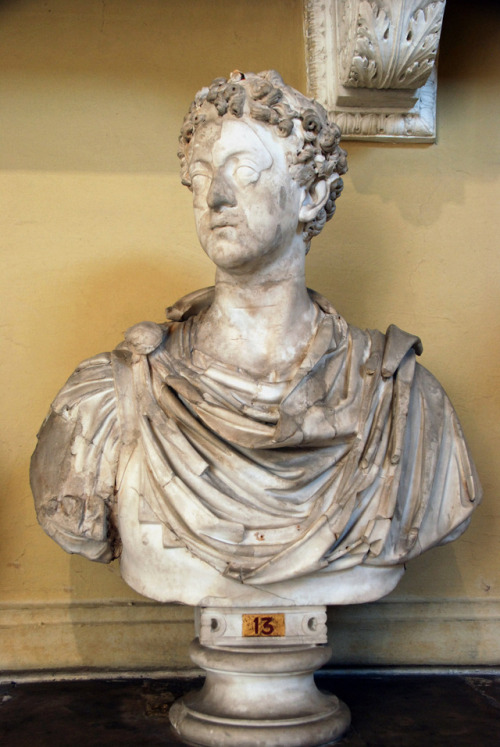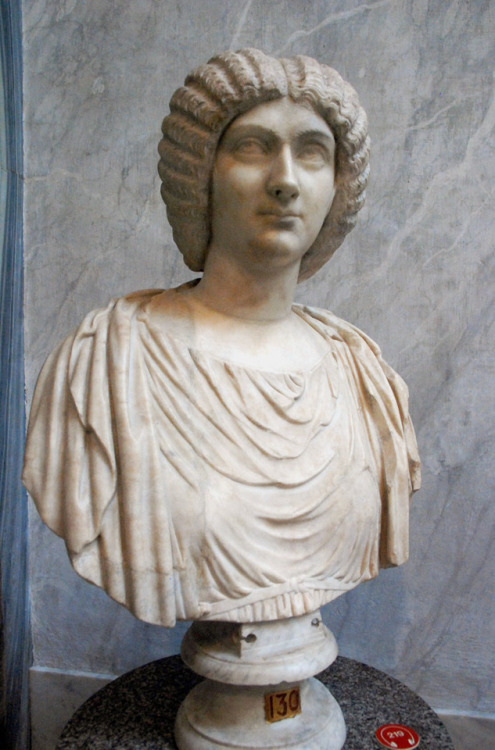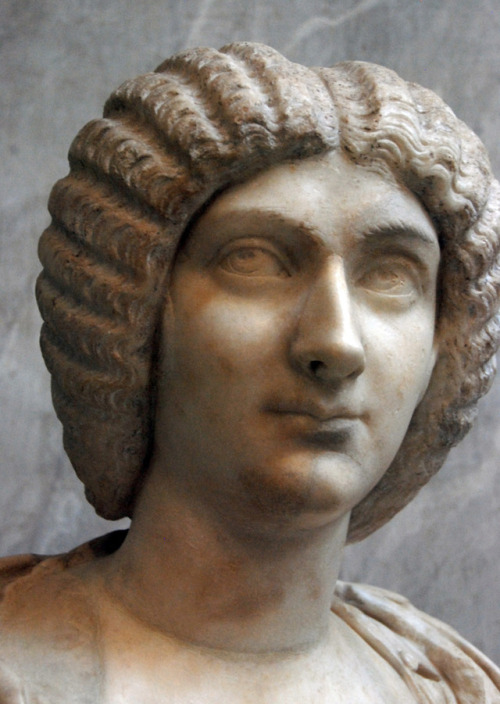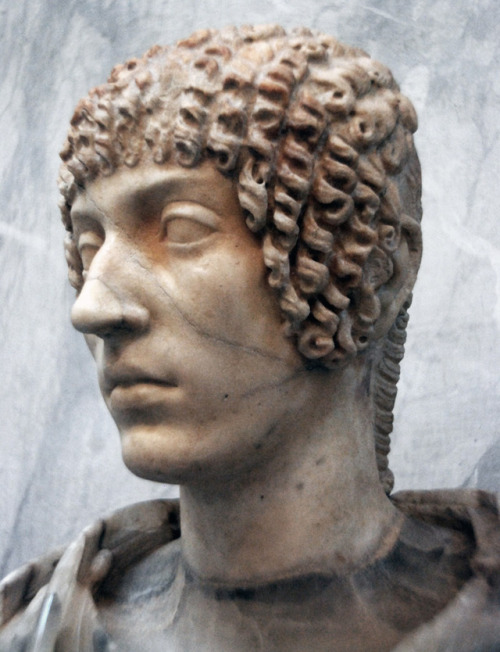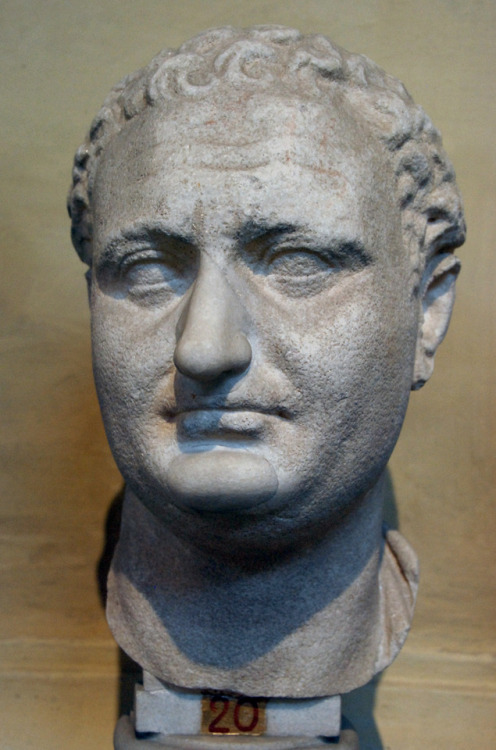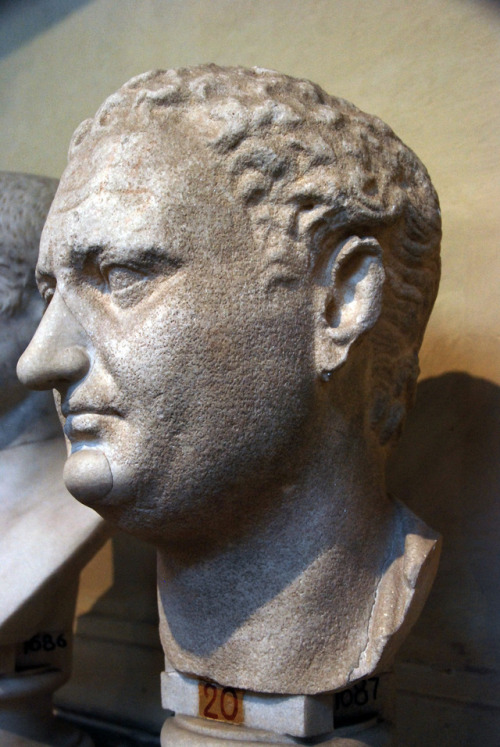#musei vaticani
Marble slab from the family tomb of a castellarius
The inscription reads:
D(is) M(anibus) / Cleme(n)ti Caesar/um n(ostrorum) / servo caste/llario aquae Cl/audiae fecit Clau/dia Sabbathis et si/bi et suis
The deceased, Clemens, controlled the distribution tanks (castella) of the Aqua Claudia (initiated by Caligula in 38 and completed by Claudius in 52), mentioned in the epigraph of the arches (now Porta Maggiore) incorporated in the Aurelian Walls (the final part of a 69 km path fed by springs from the upper valley of the River Aniene). The massive water system that served the capital of the Empire, described in a monograph by Frontinus, alone offers an indication of the magnificence of the city, divided into 14 regions and filled with fountains and thermal baths. Clemens was buried by his wife who bears, alongside a name of Semitic origin (Sabbathis), the same family name as Claudius. Perhaps the deceased (referred to generically as “slave of our Caesars”) belonged to this emperor and others who succeeded him rather than to the two co-reigning emperors: Marcus Aurelius and Lucius Verus (161-169 A.D.), M. Aurelio and Comodo (177-180 A.D.) or Septimius Severus and Caracalla (198-209 A.D.).
From Rome, unknown burial monument
Second half of the first – late second century A.D.
© Roma, Musei Vaticani, Galleria Lapidaria
Post link
“Need an inscription carving or anything else in marble? Here you have it”
Engraved on a marble slab, the text indicated to locals and passers-by the presence of a marble worker’sworkshop, where marble was carved and epigraphs were also engraved, as the expression scribere titulus attests:
D(is) M(anibus) / titulos scri/bendos vel / si quid ope/ris marmor/ari(i) opus fu/erit hic ha/bes.
In a sign from Palermo we instead read: “Here inscriptions can be ordered and carved” (tituli heic ordinantur et sculpuntur), while another text, mutilated, possibly commemorates a Vitalis scriptor titulorum, “engraver of epigraphs”. The poor quality of the item, the messy style of the text and the mediocre engraving of the characters suggest a small shop, frequented by customers with little money and few pretensions. We do not know the location, but it may originate from the area of Campus Martius which is known to have had a high concentration of marble workshops.
II-III century A.D., from Rome
© Roma, Musei Vaticani, Galleria Lapidaria
Post link
Raffaello Sanzio, La scuola di Atene, Musei Vaticani, Roma.ricord

Capilla Sixtina, Roma

Stanze dì Raffaello “Cacciata di Eliodoro dal tempio” 1511 Musei Vaticani
Portrait of young Commodus. From Ostia. Late II century AD (before 180 AD). Marble. Musei Vaticani. Inv. 1235
myglyptothek: Faces of ancient Rome
Post link
Portrait of empress Julia Domna. Early III century AD. Bust is modern. Mable. Musei Vaticani. Inv. 2210
myglyptothek: Faces of ancient Rome
Post link
Portrait of a woman. Head - claudian period, 41-54 AD, bust - hadrianic, 117-138 AD. Marble, alabaster. Marble. Musei Vaticani. Inv. 2271
myglyptothek: Faces of ancient Rome
Post link
Emperor Titus (reworked portrait of Domitian). After 96 AD. Marble. Musei Vaticani. Inv. 1687
myglyptothek: Faces of ancient Rome
Post link


Antinous
“Turn him into stars and form a constellation in his image.
His face will make the heavens so beautiful that the world will fall in love with the night and forget about the garish sun.”


Antinous as Vertumnus
Found in Ostia in the late 1700s. Now in the Vatican Museums, Rome.

Polyhymnia
Muse of sacred poetry, dance, and eloquence. 2nd century AD.
Pius-Clementine Museum, Vatican.

Colossal Bust of Antinous
Marble, 130s CE. From Hadrian’s Villa.
Pius-Clementine Museum, Vatican.

